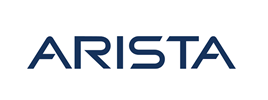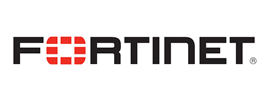- Course overview
- Course details
- Prerequisites
Course overview
About this course
In this course, students will learn to perform discovery, capture requirements, engage subject matter experts and stakeholders, translate requirements, and configure Power Platform solutions and apps. They will supplement their learnings with hands-on labs to create application enhancements, custom user experiences, system integrations, data conversions, custom process automation, and custom visualizations. Power Platform is comprised of four key products: Power Apps, Power Automate, Power BI, and Power Virtual Agents. In this course, we will cover these four applications in depth, with additional focus on the Common Data Service, AI Builder, connectors, and portals.
Audience profile
A Power Platform Functional Consultant is responsible for performing discovery, capturing requirements, engaging subject matter experts and stakeholders, translating requirements, and configuring Power Platform solutions and apps. The Functional Consultant implements components of a solution that include application enhancements, custom user experiences, system integrations, data conversions, custom process automation, and custom visualizations.
At course completion
After completing this course, students will be able to:
- Work with an organization to gather requirements and implement Power Platform solutions
- Build model-driven, canvas, and portal apps
- Create Power Automate flows
- Design a simple chatbot using Power Virtual Agents
- Analyze data using Power BI visualizations and dashboards
Course details
Module 1: Introduction to the Power Platform
This module will provide the learner with background about the Power Platform and its 4 key components: Power Apps, Power Automate, Power BI, and Power Virtual Agents.
Lessons
- Power Platform overview
Lab : Validate lab environment
After completing this module, students will be able to:
- Identify the key components of the Power Platform
- Describe the role of a functional consultant
Module 2: Work with the Common Data Service
In this module, students will learn about creating a data model in the Common Data Service, including importing data, using tabular reporting options, and configuring security. They will also learn about creating easy AI with AI Builder.
Lessons
- Work with the data model
- Create and manage processes
- Work with AI Builder
- Configure Common Data Service settings
- Import and export data
- Use tabular reporting options
- Configure security settings
Lab : Create an app
Lab : Create entities and fields
Lab : Create relationships
Lab : Additional entity options
After completing this module, students will be able to:
- Create a data model
- Configure Common Data Service settings
- Configure security
Module 3: Make Power Apps
In this module, students will learn the business value of the three types of Power Apps. They will then learn to how to configure and design them, including user experience considerations for each type of application.
Lessons
- Make model-driven apps
- Make canvas apps
- Make portal apps
Lab : App designer
Lab : Modify forms
Lab : Modify views
Lab : Build dashboards
Lab : Canvas app fundamentals
Lab : Work with data and services
Lab : User experience
After completing this module, students will be able to:
- Create and design a Power App
- Connect a Power App to data
- Design app navigation
Module 4: Build Power Automate flows
In this module, students will learn how to automate business processes using Power Automate flows, business process flows, and UI flows.
Lessons
- Build flows
- Build business process flows
- Build UI flows
Lab : Create users
Lab : Create security role
Lab : Configure a new business rule
Lab : Advanced business rules
Lab : Create a flow
Lab : Build approval flow
Lab : Build a business process flow
Lab : Add branching to business process flow
After completing this module, students will be able to:
- Automate business processes using flows
- Connect to data in Power Automate
- Create a business process flow with branching logic
Module 5: Work with Power Virtual Agents
In this module, students will learn how to automate customer interactions with a chatbot using Power Virtual Agents.
Lessons
- Create a chatbot
- Configure topics
- Automate and integrate
- Configure entities
- Test and publish chatbots
Lab : Create a chatbot
After completing this module, students will be able to:
- Configure topics, entities, and variables
- Create a chatbot
- Integrate with Omnichannel for Customer Service
- Work in the PVA interface
Module 6: Analyze data with Power BI
In this module, students will learn how to work with Power BI Desktop and Power BI Service to analyze data and create visualizations.
Lessons
- Get started with Power BI
- Model data in Power BI
- Create visualizations
- Create dashboards
- Publish and share in Power BI
Lab : Build a Word template
Lab : Build an Excel template
Lab : Duplicate detection
Lab : Import data
Lab : Export data
Lab : Bulk delete
After completing this module, students will be able to:
- Create visualizations
- Consume data in Power BI
- Export data visualizations for stakeholders
Module 7: Consultant skills
In this module, students will learn more about the functional consultant role and the skills required to successfully implement a Power Platform solution for an organization.
Lessons
- Consultant skills overview
- Create and validate documentation
- Engage stakeholders
- Perform quality assurance
- Configure integrations
After completing this module, students will be able to:
- Identify appropriate documentation
- Write a business requirement
- Engage stakeholders with demos
- Participate in ALM and testing
Prerequisites
- Experience as an IT professional or student
- Working knowledge of the Power Platform and its key components
- A knowledge of the Common Data Service and security concepts
Enquiry
Course : PL-200: Microsoft Power Platform Functional Consultant
Enquiry
request for : PL-200: Microsoft Power Platform Functional Consultant




















